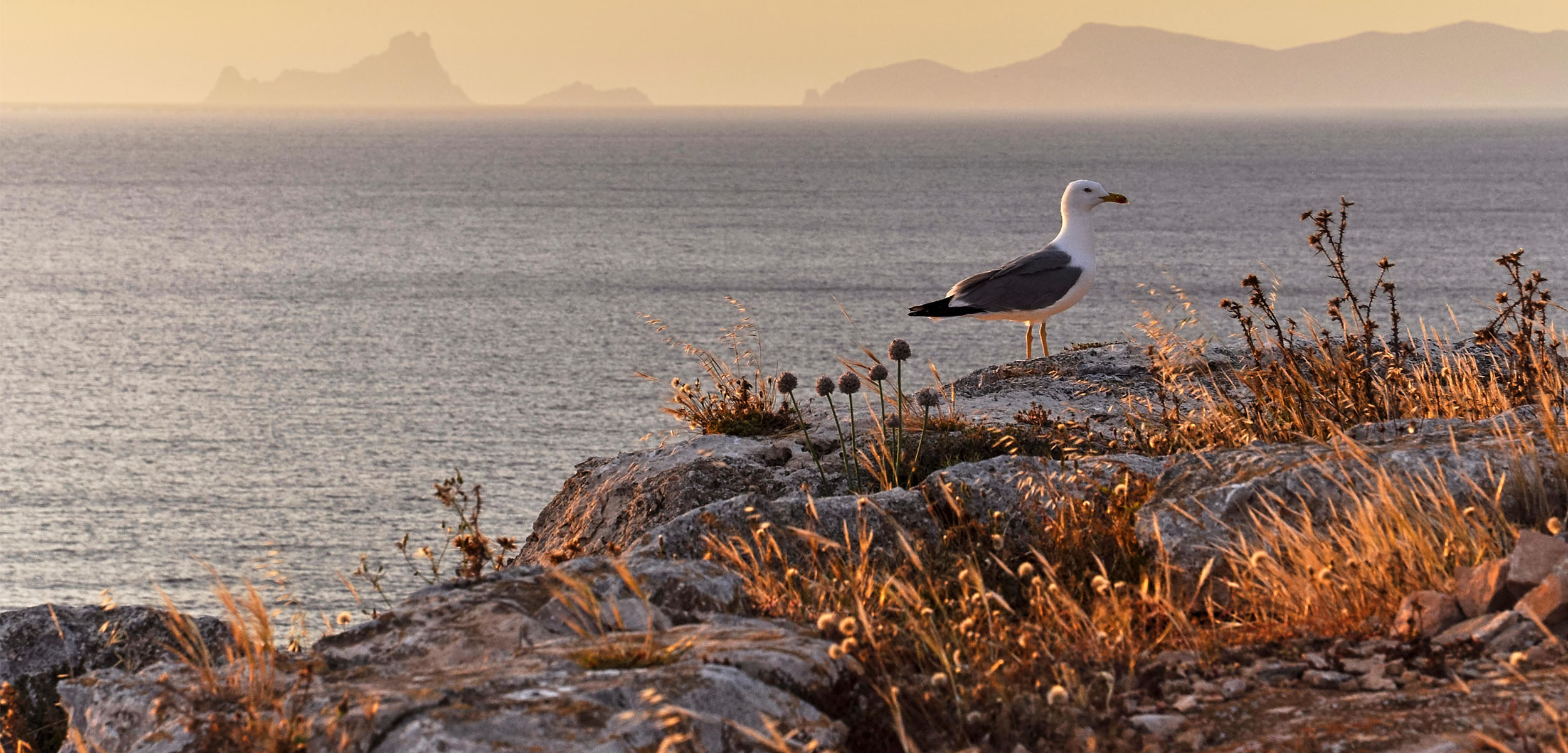On Mallorca, Gull Dinner Features Spanish Olives
Yellow-legged gulls play a long-overlooked role in a Mediterranean archipelago: they carry olives far and wide.
Article body copy
The Balearic Islands, a Mediterranean archipelago off the coast of Spain, are a famed travel destination. Clubbers and nightlife enthusiasts flock to Ibiza, while Mallorca is more popular with families and newlyweds seeking sun, sand, sea, and history. To tourists and beachgoers, the islands’ screaming, French fry–stealing gulls are pests. But these ubiquitous birds play a surprisingly important ecological role in the picturesque archipelago.
Two decades ago, ecologist Alejandro Martínez Abraín was studying seabird colonies along Spain’s coast near the Balearic Islands when he noticed something odd. On rocky outcrops and in isolated coves, he found greenish-brown olive pits everywhere, scattered under the webbed feet of hordes of yellow-legged gulls. In most locations, the pits had accumulated in limestone crevices without germinating. But at one colony in the Ebro Delta, about 175 kilometers south of Barcelona, olive saplings were sprouting up from sand dunes.
Wild olive trees are common in Spain, where the Phoenicians introduced the plant more than 3,000 years ago from the eastern Mediterranean. The trees are culturally important, too; people have been cultivating domestic olives and tending to groves in the region since at least the Middle Ages.
In the Ebro Delta, the discarded pits were changing the ecosystem from the grasses and scrubby conifers typical of dune systems to a wild olive forest, says Martínez Abraín, who is now an ecologist at the University of A Coruña in Spain. Connecting the dots, he realized that gulls were eating olives elsewhere and regurgitating the pits in small piles around their breeding sites. “It was really ecological engineering, and nobody was paying attention to that,” he says.
Martínez Abraín began collecting the spit-up pits, but the finding took on new meaning after Haruko Ando, an ecologist and expert in seed dispersal at Japan’s National Institute for Environmental Studies, heard about the olive-eating gulls on a recent visit to Spain.
Working with Martínez Abraín and other collaborators, Ando revealed in new research that yellow-legged gulls are eating both wild and domestic olives and spreading those seeds over long distances between the Balearic Islands. The archipelago provided the scientists with ideal conditions for studying seed dispersal by gulls. Some islands, like Dragonera, located about one kilometer off the west coast of Mallorca, have groves of wild and domesticated olives, but on the smaller, treeless islands, birds are the only distributors of pits.
The findings “clearly demonstrate the potential for gulls to move seeds from one island to another,” says Debra Wotton, an ecologist at the University of Canterbury in New Zealand and founder of science consultancy Moa’s Ark Research, who was not involved in the new study. “Dispersal is a fundamental process in shaping plant communities, which are the foundation of an ecosystem,” she adds. “So these gulls are an integral part of their environment.”
To figure out how far gulls might spread olive seeds, Ando and her coauthors needed to know how long it takes for gulls to regurgitate olive pits. In trials with captive birds, the scientists fed four yellow-legged gulls olives hidden inside tasty sardines. On average, the gulls took more than 30 hours to spit up the seeds, stripped of fleshy fruit.
During that surprisingly lengthy period, gulls can carry olive pits long distances. Based on the movements of 20 wild birds fitted with GPS transmitters, the scientists estimate that, on average, gulls move wild olive pits more than 7.5 kilometers and domesticated olive pits more than 12.5 kilometers. They estimate that the farthest gulls are transporting olive pits in the archipelago is 100 kilometers.
That gulls are moving domestic olives greater distances than wild ones suggests the birds prefer the larger, meatier cultivated olives—just like people—and are flying farther to reach the groves where they grow, Ando says.
Yellow-legged gulls have long been seen as a nuisance that needs to be controlled rather than part of the ecosystem, says Martínez Abraín. But now, he hopes people will recognize their valuable role as seed spreaders. Gulls don’t just loiter at garbage dumps and harass fishermen—they also help shape landscapes across the archipelago.
No species is good or bad, Martínez Abraín adds; they’re all simply part of the fabric of life. Pull one loose thread and you might find it connects a seabird to an unexpected snack.

